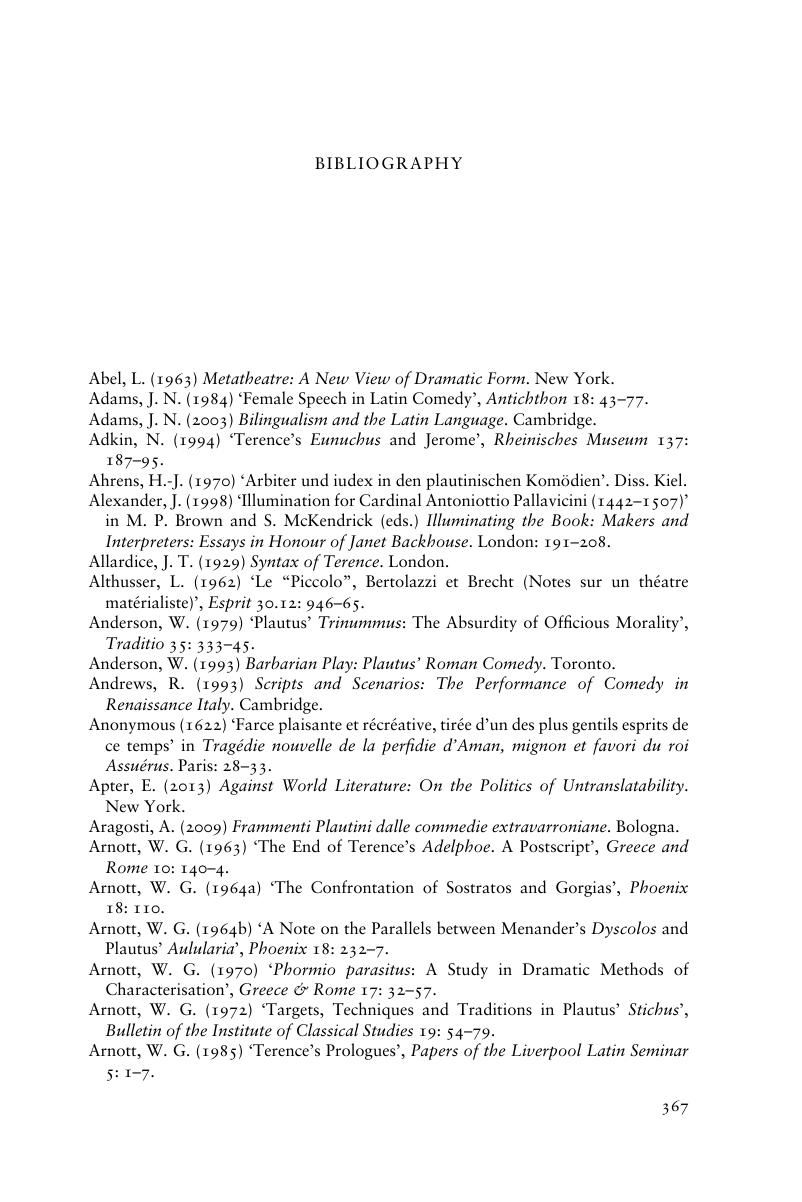Book contents
- The Cambridge Companion to Roman Comedy
- The Cambridge Companion to Roman Comedy
- Copyright page
- Dedication
- Contents
- Illustrations
- Contributors
- Prologue
- Acknowledgements
- Extant Plays by Plautus and Terence
- Abbreviations Used for References to Fragments
- Introduction: Roman Comedy
- Part I The World of Roman Comedy
- Part II The Fabric of Roman Comedy
- Part III The Sociology of Roman Comedy
- Part IV The Reception of Roman Comedy
- Bibliography
- Index Rerum
- Index Locorum
- Cambridge Companions to …
- References
Bibliography
Published online by Cambridge University Press: 30 March 2019
- The Cambridge Companion to Roman Comedy
- The Cambridge Companion to Roman Comedy
- Copyright page
- Dedication
- Contents
- Illustrations
- Contributors
- Prologue
- Acknowledgements
- Extant Plays by Plautus and Terence
- Abbreviations Used for References to Fragments
- Introduction: Roman Comedy
- Part I The World of Roman Comedy
- Part II The Fabric of Roman Comedy
- Part III The Sociology of Roman Comedy
- Part IV The Reception of Roman Comedy
- Bibliography
- Index Rerum
- Index Locorum
- Cambridge Companions to …
- References
Summary

- Type
- Chapter
- Information
- The Cambridge Companion to Roman Comedy , pp. 367 - 406Publisher: Cambridge University PressPrint publication year: 2019



